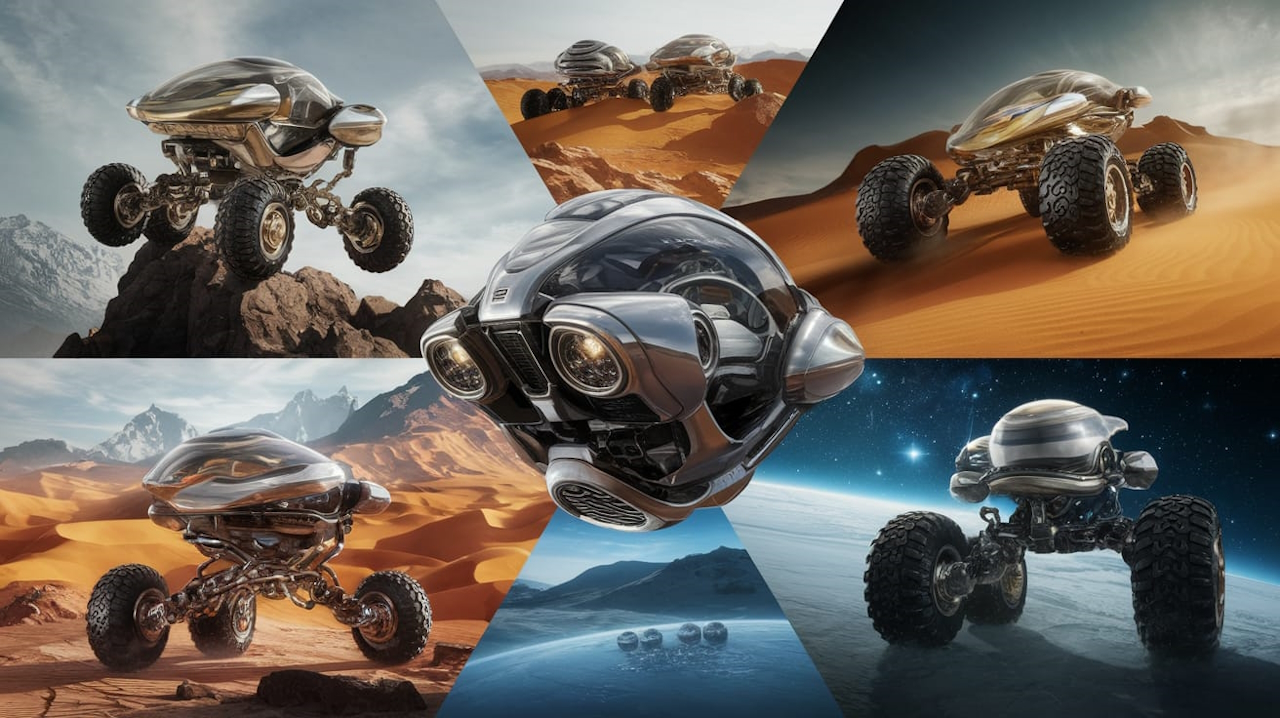Imagine a robot that morphs its form like shifting sand to conquer nature’s many challenges – truly a breakthrough in adaptive robotics. The newly unveiled morphing robot is set to change the way we perceive how machines interact with challenging terrains, drawing on bioinspired design to seamlessly reshape itself and overcome obstacles. This pioneering creation heralds a new era in terrain navigation robotics.
Detailed in a recent study published on February 26, 2025 (recent study), the innovation offers not only fascinating technical insights but also a glimpse into the future of robotics. Technology enthusiasts, academic researchers, and industry professionals alike eagerly await further developments as this morphing robot stands at the forefront of adaptive robotics and innovative engineering.
Background and Technological Evolution
Historically, robotics has evolved from rigid, single-purpose machines to versatile devices capable of tackling varied environments. Early developments in the field often struggled with the limitations imposed by conventional designs, which could not easily adapt to obstacles. This challenge spurred research into bioinspired designs, marking the beginning of a shift towards smarter, more resilient robots that mimic natural forms and movements.
Drawing inspiration from living organisms, scientists have developed mechanisms that allow this new robot to alter its structure in real time. These advancements bridge the gap between traditional robotics and adaptive mechanisms, enabling improved terrain navigation and operational flexibility on challenging grounds.
Detailed Analysis of the Morphing Robot
At the heart of this technological marvel is its ability to adjust its configuration dynamically—a key feature that enhances performance while reducing energy consumption during field operations. The design integrates advanced materials, an array of sensors, and an intelligent control system that works synchronously to achieve seamless transitions. This innovative design positions the robot ahead of many conventional systems that often struggle in diverse environments (innovation overview).
Real-world testing in rugged terrains has demonstrated the robot’s exceptional capabilities. Field evaluations have highlighted its energy efficiency, robust performance, and superior adaptability when compared to traditional models. Its potential applications range from search-and-rescue operations and exploration missions to military uses, marking a substantial impact on both scientific research and industrial practices (related report).
Industry and Research Implications
The emergence of adaptive robotics, exemplified by the morphing robot, is sparking a wave of innovation across the industry. Researchers and engineers are increasingly drawn to bioinspired designs that marry form with function, addressing long-standing issues in terrain navigation robotics. Recent trends have seen significant interest from key players, including engineering teams from EPFL’s CREATE Lab, who are actively developing next-generation morphing systems (recent demonstration).
Looking ahead, future developments are anticipated to integrate AI-driven enhancements and novel materials, further broadening the scope of adaptive robotics in both commercial and social contexts. As ethical and reliability considerations remain central to these discussions, ongoing research and industrial feedback will be vital in shaping safe and effective robotics solutions for real-world challenges.
Case Studies and Comparative Analysis
When compared to other adaptive robotic designs like “Leafbot”, the morphing robot distinguishes itself through its sophisticated shape-changing abilities and real-time adaptability. Detailed comparisons in academic literature and multimedia reports have shed light on the nuances of various robotic designs, highlighting the morphing robot’s superior performance and innovation (comparison study).
Case studies from extensive field tests reveal that iterative design improvements have set new best practices for future projects. As experts analyse operational data and conduct comparative assessments, refinements in bioinspired mechanisms continue to advance the overall field of adaptive robotics. A detailed discussion of these advancements is available for those interested in exploring the technology further (visual analysis).
Continued exploration
Beneath the rapidly advancing field of robotics lies the transformative power of bioinspiration – vividly demonstrated by the morphing robot’s ability to master challenging terrains. Its innovative design, proven real-world performance, and far-reaching implications underscore the importance of continued exploration and refinement in adaptive robotics.
Stepping into a future where machines redefine adaptability and challenge conventional limits, the morphing robot invites us to reimagine what is possible in robotic evolution.
For further insights and an exploration of similar pioneering technologies, please visit our archive of related neural network news (related neural network news).
In Other News…
Honor’s New UI Agent Published on 2 March, Honor unveiled an AI agent that can “read” and interact with your device’s screen to carry out tasks like booking a table via OpenTable. The innovation uses multimodal screen context recognition, positioning itself as a cost‐effective alternative to traditional API‐driven methods.
wired.com
AI’s Role in Hollywood at the Oscars A Business Insider piece from 3 March discussed how AI-assisted films—like “The Brutalist” and “Emilia Pérez”—are reshaping Hollywood. While AI tools are helping refine accents and visual effects, the controversy over undisclosed AI use in creative processes is sparking a broader debate on transparency and copyright.
businessinsider.com
Samsung’s New Galaxy A56 with AI Enhancements On 1 March, Samsung introduced its Galaxy A56 (along with its siblings A36 and A26), now featuring enhanced AI capabilities such as an improved object removal tool, facial expression swapping, and smart search functions. This move marks a significant push to bring advanced AI features to the budget-friendly market.
theverge.com
AI-Designed 2032 Olympic Venues A Courier Mail report from 2 March revealed that AI was employed to design concepts for the 2032 Olympic venues. While the designs impressed in many areas, the system struggled with certain details such as roof placement and landmark positioning, sparking a lively discussion on the creative limits of AI.
couriermail.com.au
China’s Honor Invests $10 Billion in AI Reuters reported on 2 March that Chinese smartphone maker Honor is set to invest $10 billion over the next five years in developing AI-powered devices, signalling a major strategic shift as the company aims to diversify beyond smartphones with AI-enhanced PCs, tablets, and wearables.
reuters.com
UK Copyright Debate Heats Up On 1 March, Reuters highlighted that Sir Keir Starmer has downplayed proposals allowing AI companies to use copyrighted material without consent. The discussion, which features responses from prominent creatives, is part of an ongoing debate over how best to balance AI innovation with protecting artistic integrity.
thetimes.co.uk
Anthropic’s CEO Warns of AI Risks A Business Insider article from 1 March quoted Anthropic CEO Dario Amodei expressing concern that the public is not yet taking AI risks seriously enough. He predicts that in the near future, the full scope of AI’s impact may come as a shock, even as the company continues to push the boundaries of its technology.
businessinsider.com


